Leaderboard
Popular Content
Showing content with the highest reputation on 10/13/22 in all areas
-
3 points
-
@joe90, @Ferdinand, @Kelvin, @NSS, @Onoff, @Temp: Ok, so an update on this one: I realised since posting this that we've actually excavated closer to 1.8m at the back of the site, due to the slope (will measure it tomorrow, hopefully under the key 2m threshold). This retaining wall is 1 meter from their boundary, and they do have an out-house of sorts at the end of their garden, likely within 3m from our retaining wall. However, this work was conducted 6 months back.. Before anyone asks, the concrete block wall is reinforced with vertical steel bars, a horizontal steel mesh, and a heel and toe. We've also got drainage behind it. Planner has reached out to me, and I've offered them a site visit (I figure this will serve us better than photos), and I'd like the chance to address any concerns. I think probably sensible to also have our planning consultant attend the site visit so we can best address any concerns. It would be interesting to understand the neighbour's actual concerns - but as far as I can tell - they just seem to be 'one of those'. They objected to our rear dormer on the basis it impacted their privacy, despite it being 60 metres away from their house... I.e. I think @joe90 has got the right idea.. Any other ideas gratefully received3 points
-
there is a 200mm zone below any WC connection that you cannot branch into.2 points
-
But this is gas which is a bit more tricky than using electrical energy where energy delivered through the meter "must" be being used to do some sort of work somewhere. For example, but you could be just venting un-burnt gas straight out the building via a leak somewhere, without it ever becoming heat energy. Or more likely (per @markocosic analysis), short cycling and poor condensing meaning a bunch of unused heat energy is going out the flue.2 points
-
The boiler SHOULD modulate down to meet your flow temperature setpoint. If it can't modulate down enough then it will shut off until the circulating water has cooled sufficiently that it can fire again. That is not necessarily a disaster. (old boiler never modulated at all, and relied on cycling to match their average output to what is needed) It will still operate with acceptable efficiency if the flow/return temps are in the condensing range. Your radiator output is not high enough to be above the boiler's minimum output. That's probably because your rooms are at the temperatures (that are set by the TRVs), the TRVs are throttling the input into the radiators, and something somewhere is bypassing the flow back to the boiler return in order for it to be this high. If you have a towel rail on the circuit that would be a likely culprit. Else look for a sneaky bypass hidden somewhere. Setup the boiler properly. Space heating should be weather-compensated (flow temperature out to radiators only increases if it needs to because the weather is cool). This should result in the TRVs throttling the input into the radiators less. Better for it to sit there condensing at 45/40 than not condensing at 70/65. If you can't weather-compensate the boiler because it's been installed by some numpty as a non condensing boiler then you'll need to rework your controls such that the hot water cylinder and the space heating systems can operate independently/request different flow temperatures from the boiler. It sounds like your underfloor circuit IS drawing enough water / heat from the boiler that the return remains tolerably low. (i.e. all 30 degrees is being sucked out by the floor) If it ALWAYS runs like this then your underfloor system must ALWAYS be calling for heat and NEVER reaching setpoint. The UFH mixing temperature should be set as high as the floor can tolerate/as high as the floor needs to deliver the peak space heating demand in winter. (whichever is less) You can then use the weather compensation on the boiler to reduce the flow temperature out to the floor to less than this if you don't need that much heat. The above will trim your usage by perhaps 20% by allowing the boiler to condensate and reducing cycling time by having more of the water in the system active at any one time (rather than throttled by TRVs) Fundamentally your energy use is what it is due to the building fabric / ventilation / comfort setpoints rather than the heat source though. Is there adequate insulation under this UFH or are you now "slowly reheating the ground under the house" after a summer of inactivity and it slowly getting grained down over autumn? That could also be an issue. A floor that manages to keep on sucking heat out from a boiler is suspect.2 points
-
Just watched last nights grand designs, where they had a site break in. Damaged three large sliding doors to steal some power tools. so I thought I would just add a bit of my philosophy from running a business in London for twenty years. Our yard used to get ransacked regularly, windows smashed on trucks to steal the change from the ashtray, the answer was to leave the trucks open, we still got ransacked but they took £4 in loose change and it didn’t cost me £70 for a side window. My house site is the same. My front door is unlocked, the back sliders are open with a very visible gap, there is nothing in the house apart from my radio and a chop saw, I don’t take the chop saw out because it is screwed to a bench and I cannot be bothered. So if a scrote comes on to site, he can walk in freely and take the radio, if he’s feeling really clever he can unscrew the saw. Total stolen £400. Damage caused hopefully £0. If some scumbag sticks a crowbar down the side of my front door it’s going to cost me at least £2500 to pull the frame out and replace, loads of agro with the insurance company. So the doors unlocked. Just my way of dealing with it.1 point
-
Ok that was just an example I use 2 of these https://www.bes.co.uk/testo-115i-clamp-thermometer-smart-probe-23125/?ref=gs&gclid=EAIaIQobChMIl96q-_fd-gIVCLbtCh2T8wNKEAQYAiABEgImHfD_BwE work a treat1 point
-
yeah, but that's underground drainage! and, yes, I know it's in a basement so technically is underground but I thought orange stuff was to be buried and grey/black was for internal.1 point
-
If the WC goes direct into the stub itself you may have a problem with distances to the entries for sinks and showers. Have you got a copy of the regs..?1 point
-
1 point
-
1 point
-
At picture 6 i don't think it will flow. Splat as delightfully explained above.1 point
-
One of these. Needs to be suitable for high temperatures so it is likely to be red, but worth asking for high temp black if possible. They each have a range of diameters they can be cut to. Choose the biggest as that allows more tolerance and best fit on the pipe. On a steepish roof the silicon skirt has to distort from slope to vertical. I have known plumbers make a right mess of installing these, so don't assume the skills are there. Needs roof screws and mastic tape. In answer to how much prep to do...it depends if you think you or the roofer will do the better job. I would us an old fashioned plumb bob to get the hole in the right place, then a vertical pilot hole. NB the circular pipe requires eliptical holes through the roofing materials. .or oversized circles.1 point
-
you're assuming I have a design! I have little space to run these soil pipes. I've come to the conclusion that our house was designed for aesthetics with not a lot of thought about how everything is going to put in. I have to run soil pipes around MVHR ducts, block and beam, posi-joists and lots of other obstacles that make it hard to do simple runs. hence the number of 135° bends to offset around obstacles. I'm not sure what you mean by wrong orientation though? I'm just trying to get s**t from the toilet branch to the soil pipe through the basement wall! we have 3 bathrooms that will go out through that single outlet.1 point
-
Revisiting this thread briefly, I am delighted I ran away at post 4 on page 1. Play nicely, peeps. 😉1 point
-
So at the bottom of a "long drop" it ends in a branch. That is going to go "splat" that should be a rest bend at the bottom.1 point
-
cheers everyone. Looks like the Mrs likes the granite stones so that could be the way to go Will absolutely look at ordering direct from quarries, although it would have to be dumped onto the road if tipped..................1 point
-
All good advice thanks. I'm going to fix the balustrade to the inside of the parapet wall to give the full 1100mm without a step and also greater assurance of the strength of the fixing.1 point
-
Is a building(s) within a building an option? Say you have a 2/4 post lift and most of your work uses that. Build a tall, insulated garage. Then maybe a small, seperate welding booth. Poly tunnel for spraying. Storage of cars etc just goes in the cold, main envelope. In Carcoons if needed. Perhaps a garden shed as the tea room etc. The main building shell then just acts as a first line of defence.1 point
-
1 point
-
Very serious question 😬 How long was it before you ( meaning fellow self builders) could bear to watch Grand Designs after your own self build. We’re 99% of the way to completion but can’t even bear to see the programme pop up on our recommendations! Therapy beckons……..1 point
-
22.5 x 12 x approx 5.5m high. So yes, just a simple box.1 point
-
1 point
-
I tried extremely hard to find any evidence of lightning damage to a building, other than to the obvious case of old churches. Stone, on a hill, high tower etc. Designed to be struck. Didn't find any. I don't suppose anyone wants to say there is no risk.1 point
-
1, I used 2 rows of treated 4x1 horizontally screwed into the pipe/ posts. Then from inside used decking screws through the 4*1 into the larch. 2, time will tell. as it's in rock and not soil, and that the water tends to run off the rock I'm hoping a long time😂. Originally wanted to use scaffold pole, but it's too big for 65mm MDPE. On the future extension ( for pigs with opal sheets ) I think I'll go one size up in pipe and used scaffold poles.1 point
-
You could easily lose your neighbour in 900mm if you do end up having to back fill.....1 point
-
Ok, that’s all good if your BCO has green-lighted your green blob The base of the stack 1000% needs to be a rest bend, and the branch to collect the kitchen needs to be a Y branch set at least 600-800mm downstream between the rest bend and the chamber ( IMO ). As always, your BCO resides above everyone here as they will be signing it off…….but it sounds like your BCO is a pragmatic fellow, happy days! Some are total cocks. Understood regarding the chamber to the kitchen So; All systems go. “Carry on!”. 👍1 point
-
Don't be in a rush to close it up if it is there, it's an easy opportunity to get air temps equalish either side of the tin if the ventilation is sufficient, thereby eliminating condensation risk. You'd then build up your insulation layer underneath this gap. Insulating over would do the same by keeping the original tin warm but I'd want someone to sign off wind loading on a roof that size before proceeding. Have you put your postcode in the availability checker? Not available anywhere near me. If you can get it it'll be the old stuff fully bagged - nothing stopping you from ripping the bag off though for normal, breathable rockwool. Easy win on the walls with EPS beads, you'll want to do that before the roof as you'll lose access to the top of the cavity. Really consider your usage first as this won't come cheap due to the scale. Do you need to keep materials warm or just yourself? The heated jacket option mentioned earlier would be orders of magnitude cheaper if it's a workable solution. Cars were mentioned, if running for even a short period the ventilation required for fumes would render the insulation useless for a good chunk of time.1 point
-
Simple way to check for heat loss is to put a thermometer on the cylinder. Then work out the power loss from the temp difference and surface area.1 point
-
Hire one I use them for my work as pest controller, both my units were in the thousands. Even a cheap spotter / viewer around the £800 mark, still doesn't give very good detailed definition.1 point
-
Run the kitchen in a diagonal straight to the bottom left IC - gives you a rodding point and a straight flow. Also need to fix the dogleg in the utility chamber flow - move the lower right chamber across the front of the house so it’s a 90° intercept.1 point
-
How exactly are all the connections to come together at one invert at the “green blob” (lol)? Assuming the red line connects at 1st floor? Anyhoo…… You cannot have a change of direction for food wastes or ‘solids’, so main kitchen run would need to be direct to the inspection chamber, and the green stack rising would also connect to the same inspection chamber, each with their own inlet / spur. The green stack cannot drop into a branch, it MUST drop to a supported REST bend and that must go in a straight line to the chamber. In an ideal world, you would be taking the underground foul pipe around to the back of the house and you’d be fitting another inspection chamber just for the kitchen.1 point
-
Welcome. Thats the kind of post that's really appreciated here : offering help rather than a long description of a knotty problem. Photo of the silver trowel please..... ☺️1 point
-
Welcome aboard 🙂 Can you remember what your first car was?1 point
-
The embedded carbod within the oil is also massive, you need to add at least another 25% on top of the actual burner emissions. Also, can you not access off peak tarrifs? We're currently on 15p for economy 7.1 point
-
Fix the balustrade to the inside of the wall. Having it fixed onto the top of the coping will create a step and you will need to have the guarding 1100mm above the step.1 point
-
Another vote for face fixing to the wall. Glass balustrade may be nicer than railings if you want to avoid the caged feel. Kids are like lemmings. Be aware that if you have furniture on the balcony they will climb on it and risk falling.1 point
-
1 point
-
I'd be wary about fixing to the coping. I'd be concerned about the coping coming unstuck off the top of the wall. Better fix into the wall itself if possible.1 point
-
There is also minimum load requirements, based on the possible drop distance, so may not be able to meet the load requirements connected to coping stones.1 point
-
I think your balustrade needs to be inline with the inner edge of the parapet wall, best to talk to your BCO and see what he will accept as there is no continuity in thinking amongst them.1 point
-
1 point
-
At the end of the day if the self builder is happy with his design who can tell them they are wrong?, others may have a view but they don’t have to live there. I am very happy with what I designed but I am sure it’s not everyone’s cup of tea. Telling self builders if they design it themselves they will end up with garbage is pompous crap.1 point
-
Do that already. The thing is, its an out of control hobby, not a business. If i have to suffer to do it, its no longer enjoyable.1 point
-
I largely chose Loxone based on flexibility and price. I think it's more user-friendly for interested amateurs than KNX. I seem to recall that KNX was generally more expensive as well. Due to the way it distributes intelligence, for example, you end up with quite expensive light switches. I actually use KNX dimmers in one part of my installation - the older version of the Loxone hardware included basic KNX functionality.1 point
-
Loxone for me also. I think it's an excellent system, very robust, very flexible and good value compared to other centralised, whole building automation systems. Similar to others, it looks after heating, cooling, hot water, mvhr, blinds, roof vents, internal & external lighting, alarm, fire, videocom, and entrance gate. I think HA is at its best when you don't have to interface with it (too much).1 point
-
Similar to @jack I have a Loxone system (indeed I think his posts here convinced me to preserve with DIY install of it) and here's my list of automations my wife and I like in it, in approximate order of usefulness Automated skylight windows to cool down the house overnight Automatic lights entering any room (mood based on time of day and house hold mode) Single button to control many light fittings/moods in any given room General heating & HW controls (tied to presence and energy prices) Solar PV monitoring and boosting devices when cheap electricity available Turn off appliances when room/building is empty Automatic blinds based on overheating risk, sun brightness and time of day to keep sun out of my eyes when working Mute / unmute speakers in each room and outdoors based on presence Automatic lighting, towel rads, MVHR boost on running the shower Burglar and fire alarm alerting Shut off water mains when house is unoccupied Automatic lighting scene and music selection when running a bath.1 point
-
I have a Loxone system that mainly controls lighting, blinds and heating. Things I like: Programming the same switch to do different things depending on the time of day or night, and/or the day of the week. For example, after dusk, hitting the light switch in our bedroom turns on the bedside lights rather than the downlights. Hitting the light switch in the living room after dusk turns on a different scene than during the day. The system knows when dusk is, so adjusts all of this automatically over the year. Automatic blind control: all blinds come down at dusk. Some open automatically in the morning (different behaviour in some cases depending on whether it's a weekday or weekend). Some open in tilt mode rather than all the way. I have an "all blinds up" and "all blinds down" button on the app (I rarely use the app, incidentally). You can program automatic blind tilting to adjust for the sun angle and based on individual room temperatures, but I don't need that. Flexible button programming: There's an "all downstairs lights off" button in the middle of the upstairs landing, an "all upstairs lights off" button by the bottom of the stairs, and if you double-click the light switch by either bedside in our bedroom, all lights in the house are turned off. This feature alone is utterly amazing. I also have a "living room dark mode", which is the only app-based function I use on a daily basis. It turns off all the lights in the house, brings down the blinds in the living room, and adjusts the living room lighting for TV watching (pendant and wall-lights off, downlights on very low). There are garage sensors that give me a status of the garage door on the app. Nice for when you're lying in bed wondering whether you closed the garage, which I do often! I can also close the garage door from the app rather than getting out of bed and schlepping downstairs to do it. Clicking a "holiday mode" button on the app and knowing it will take care of everything from heating to turning lights on and off based on our historical evening habits. Things I like less: It was expensive, and required the use of more expensive dimmers for the lights than I might have gone for. It did avoid the need for proprietary blind controllers though. I like mucking about with it but my wife doesn't have a clue. If you aren't interesting in learning how it all works, you'll end up paying a consultant to make any significant changes (some you can do easily enough via the app). I don't know how much getting a consultant involved will cost you. I haven't done half of what you can do with a system like this, and certainly if I were doing it again I'd make some different choices (on light drivers and dimming in particular). But overall, I think it's been a clear net benefit to my life despite the costs.1 point
-
Plenty of examples i can think of:: you're out with the family for the day, but for whatever reasons we need to come home early unexpectedly. Rather than get home to a cold house, you can remotely switch on theheating or modify the schedule so that it reaches the required temperature just as you get home. Teenager at home alone. Teenager told to turn the heating off when she leaves. Teenager forgets. Tado's geolocation will turn it off as soon as the Teenager leaves. You leave the house in a rush and can't remember if you turned the heating off. No worries, you can check the Tado app and control it from there. Bad luck about being burgled.1 point
-
Do you have any other "systems" for heating, cooling, avoiding solar gain? For me it was an easier decision to have Loxone controlling the UFH as I also wanted to control the MVHR, roof vents and external blinds to ensure everything was working together to either heat, avoid heat or cool the house. Loxone decides whether the house is heating, cooling or taking passive measures using an average of all the temps from the Touch Pure light switches in each room AND comparing the temp of those rooms effected by solar gain with those that are not AND comparing the slab temp in those rooms effected by solar gain with those that are not. Loxone then decides whether to just circulate the UFH, without any heat/cool input in order to distribute solar gain, or to employ blinds and/or vents, or to heat/cool the buffer and distribute that heat/cool via UFH and MVHR. I have Loxone actuators on each loop of the UFH as well as relays to control the UFH pump, MVHR wet heat exchanger pump, DHW loop pump and a valve on the UFH splitter manifold that separates it from the buffer when it's just circulating the UFH to distribute solar gain.1 point



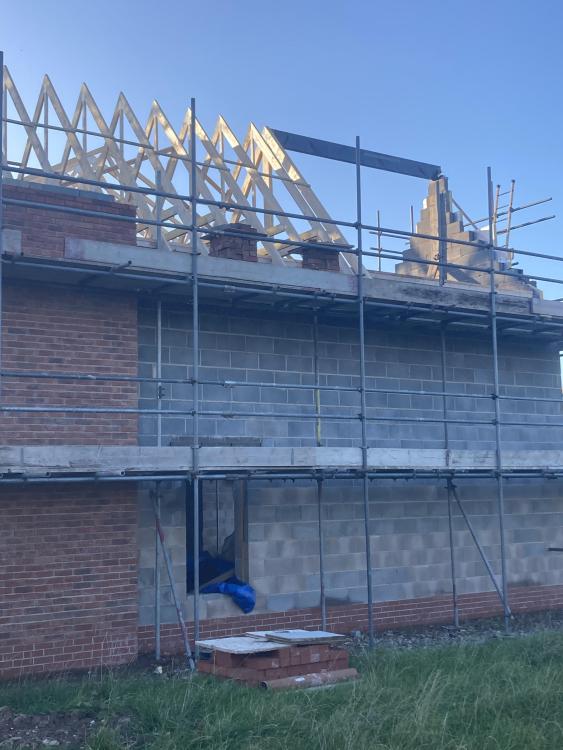
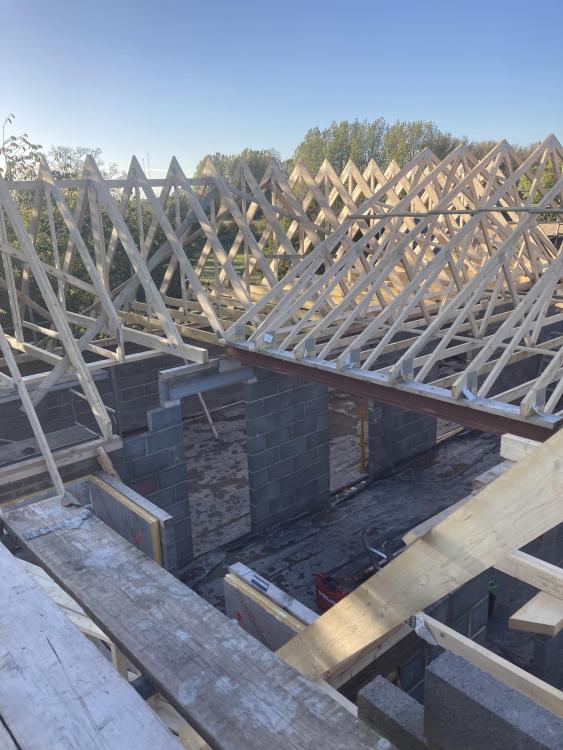


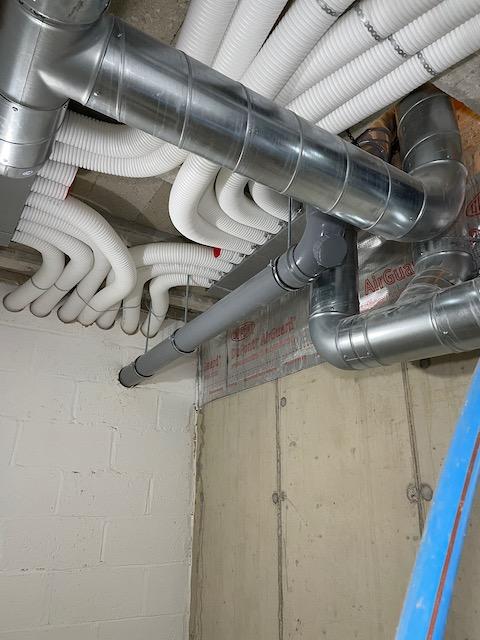
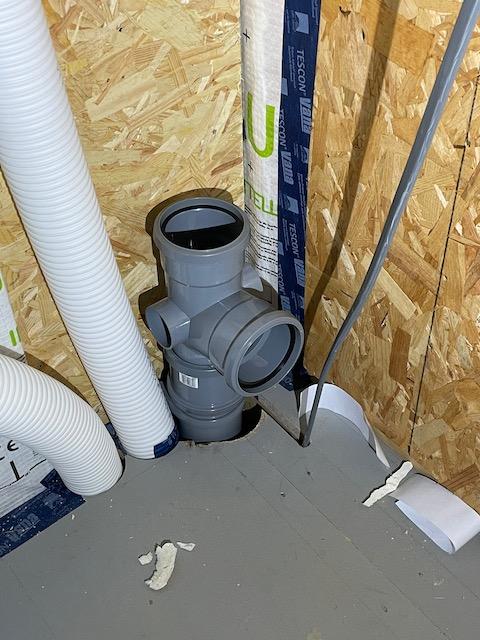
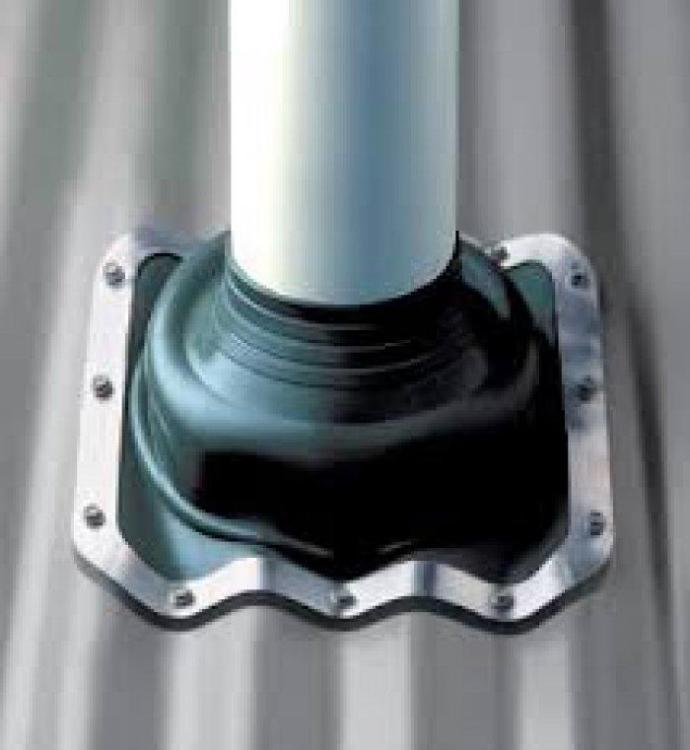














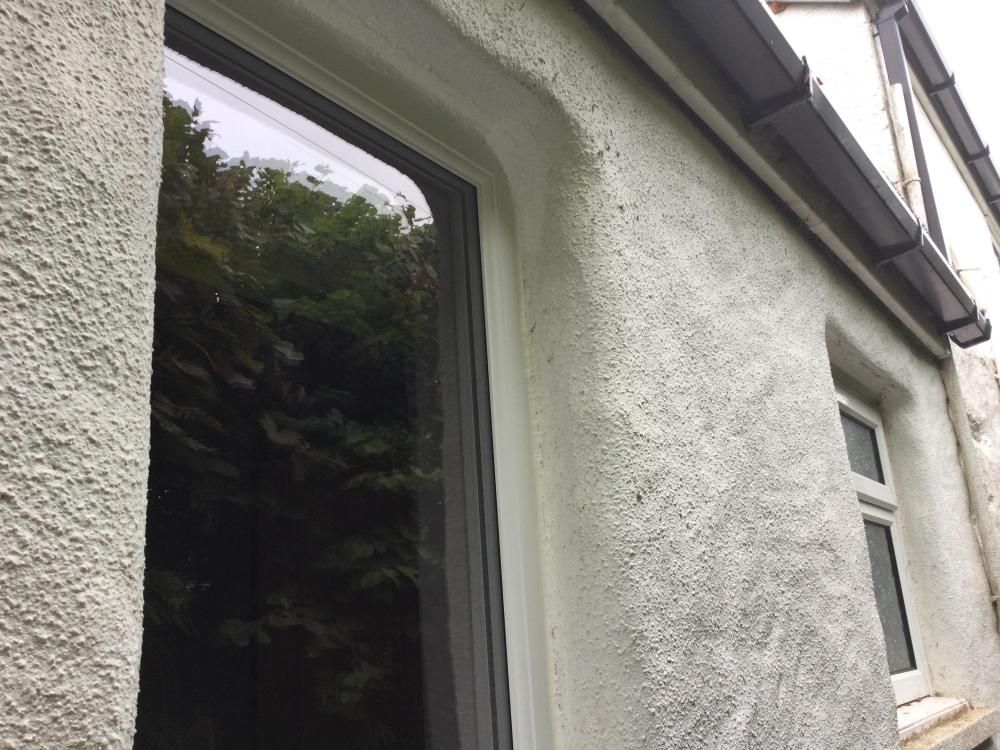
.jpg.c21f3ac78c9b7efd90cbdcb312744dc5.thumb.jpg.7adcad4c0e384f5ecd7d56b0618df6e5.jpg)

